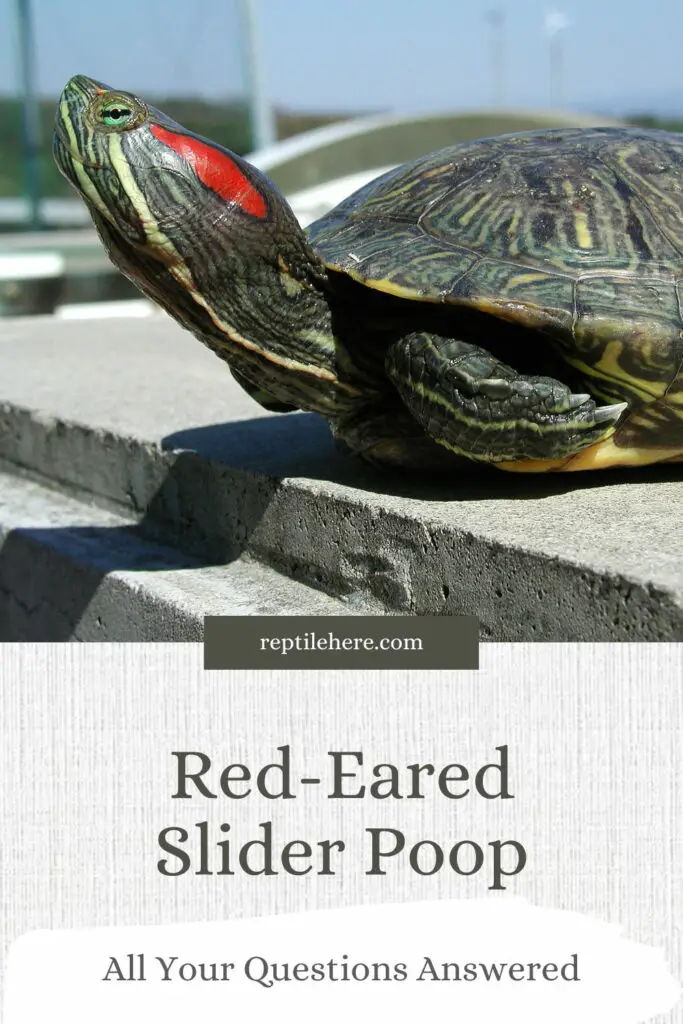Red-Eared Slider Poop: All Your Questions Answered
Red-eared slider poop says a lot about your pet turtle. For instance, just looking at its color can tell you whether you’re feeding your pet more proteins or plant matter. The poop color and appearance can also tell you about the health status of your slider.
This article answers all your questions regarding red-eared slider turtle poop. You’ll discover everything you need to know about the turtle’s poop, from how often they poop to how the poop looks like, why a red-eared slider eats its own poop, and so much more!
What should red-eared slider poop look like?
Contents
Red-eared slider poop looks like dark brown logs or pellets. However, the color and appearance of your turtle can greatly vary depending on what diet you feed your pet turtle.
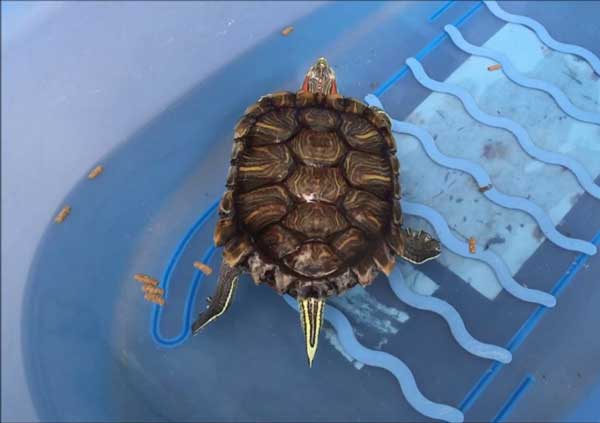
If you give him more proteins, the poop may appear darker. Not giving your turtle enough fiber in his diet may make his poop appear soft and watery.
What does healthy red-eared slider turtle poop look like?
Healthy red-eared slider turtle poop should be formed like pellets or logs, whose size depends on the size of your pet turtle) and relatively solid.
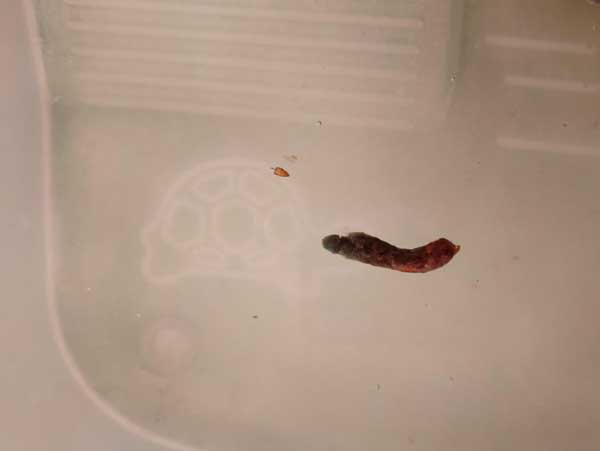
It should not be runny or watery and should be brown to green in color, though the color may vary depending on your turtle’s diet.
What does red-eared slider poop look like in water?
Slider’s poop in water will keep its shape, so assuming your turtle is releasing healthy poop, it should appear green to brown in shape and feature a log or pellet shape.
How big is red-eared slider turtle poop?
There’s no specific size when it comes to red-eared slider turtle poop. The size of the poop depends on your individual turtle and its size.
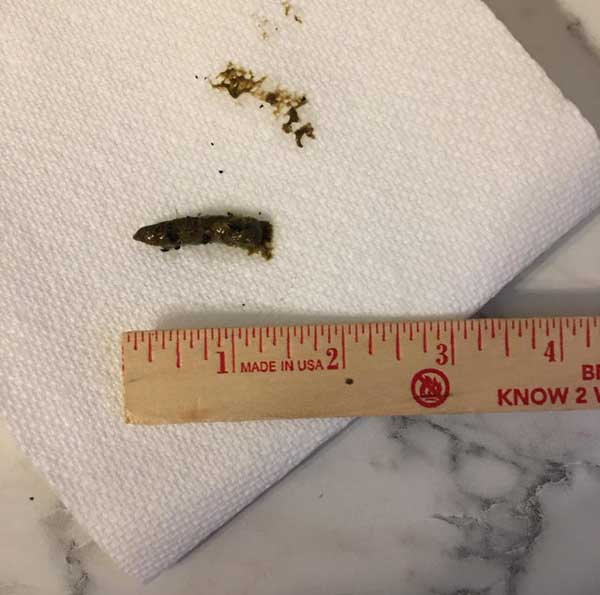
However, if you notice huge variations in your turtle poop size—for instance if it poops a few large pellets one day and many little pellets the other day—you should have it checked for any underlying condition.
How often do red-eared slider turtles poop?
An adult slider should poop around 2-3 times every week. This is because these animals don’t have fast digestion and the food may take up to 2 days to be digested and for the turtle to poop.
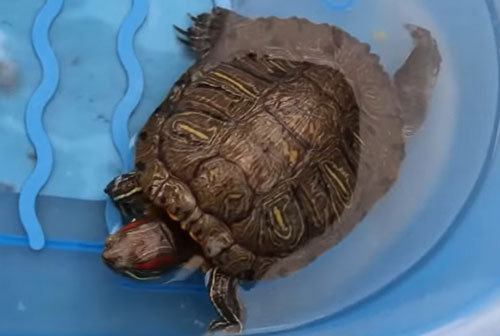
Why is my red-eared slider pooping more frequently?
If your turtle is pooping more often than expected (i.e., 2-3 days), then you may have overfed it or it could be suffering from internal parasites.
In severe cases, these parasites can result in diarrhea, causing your turtle to poop more frequently and lose a significant amount of weight.
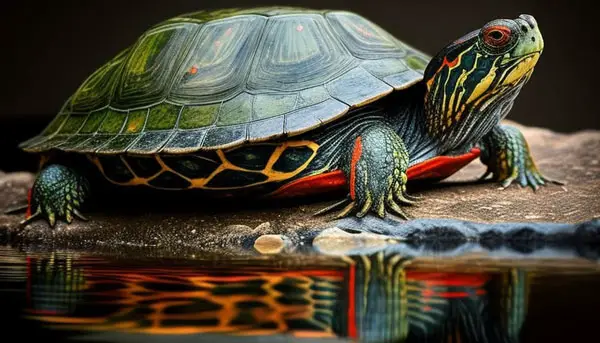
Why is your red-eared slider pooping blood?
As you can easily guess, the presence of blood in your turtle’s poop is a serious concern.
It could be a sign of gastrointestinal infection in your turtle or it could be something even more serious like liver disease.
This is a serious case that requires immediate vet intervention so that your pet turtle can be examined to determine what’s ailing it.
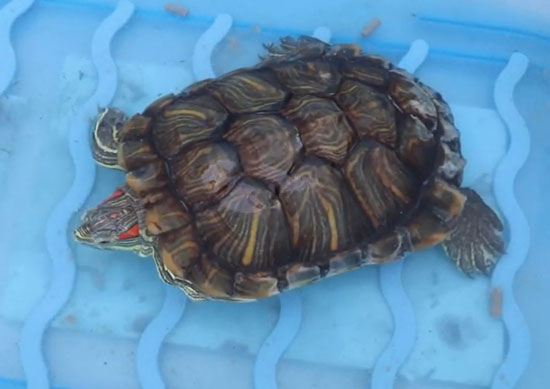
Why is your red-eared slider producing white poop?
Your red-eared slider white poop is nothing to worry about as it could be urates caused by feeding your pet too much protein diet.
However, it may also be a sign of underlying health issues such as calcium deficiency in its diet which usually causes chalky, white poop.
MBD (metabolic bone disease), which is a result of calcium deficiency, also causes your turtle to produce white poop.
The presence of parasites in your turtle system may also cause it to produce white poop.
Why is your red-eared slider producing black poop?
Black poop in red-eared sliders could be a sign of internal bleeding. This could be due to your pet turtle eating foreign objects which in turn cause internal damage and cause the turtle’s poop to turn black. In this case, you should visit your vet as soon as possible.
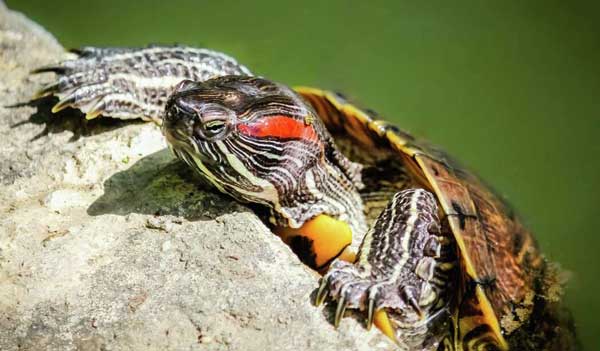
Why is your red-eared slider producing green poop?
If your slider has dark green poop, it could be a sign that you’re feeding him too much leafy green vegetables.
It could also be a sign that your slider has parasites that are notorious for changing the consistency and color of poop.
Or in some cases, green poop could be caused by bacteria overgrowth in its gut.
What does stringy red-eared slider poop mean?
If your slider has stringy poop, it could be a sign that he/she is suffering from intestinal parasites and need to be examined by an experienced vet as soon as possible for checkup and treatment.
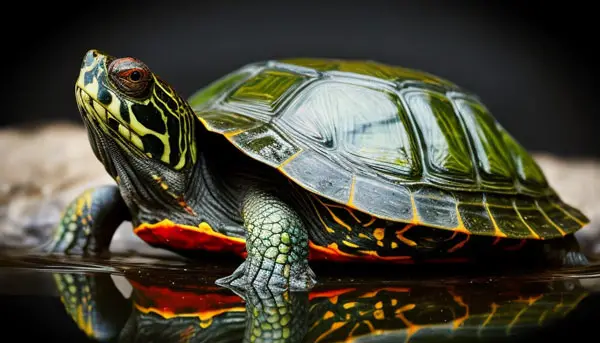
Why is your red-eared slider not pooping?
If your red-eared slider not pooping, its tank water temperature could be too low, which can cause digestion issues and make your turtle stop pooping.
Other reasons your turtle may stop eating include impaction or constipation.

Why are there worms in red-eared slider poop?
Red-eared slider worms in poop mean your slider is under attack by internal parasites.
Take your turtle to a vet for a fecal examination to be conducted on its poop and determine what type of parasites the turtle has and recommend the best treatment options.
Note that internal parasites may not show any clinical symptoms, so your turtle could still be behaving normally despite having them.
Why does red eared slider eat their poop?
If you see your red-eared slider eating poop, you shouldn’t be worried. This is a common habit in these turtles and they do it to obtain the healthy and beneficial bacteria present in the poop.
In some cases, your turtle may eat its own poop as well as that of another red-eared slider.
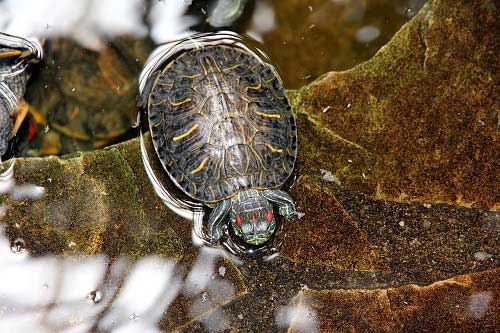
Final Verdict
Now you know what a healthy turtle poop should look like and how often you should expect your slier to poop, why its poop may have blood or appear black, green, or white in color, etc. Healthy red-eared slider poop should be relatively solid, greenish to brown, and should take the shape of a log or pellets.
If you notice any abnormal changes in your turtle poop, we advise you to consult your vet ASAP as it could be a sign of an underlying health issue. Your vet will need to check your turtle’s poop and advice on the best treatment options in case of underlying illnesses.
